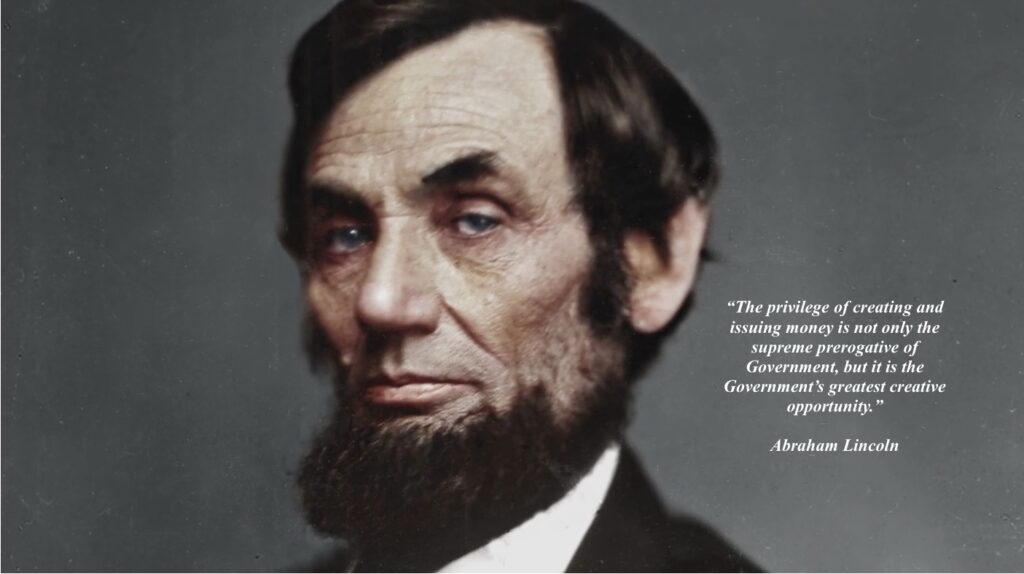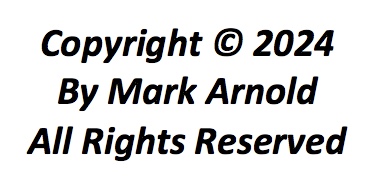Note: Presented in this article is Part II of my paper on the subject of inflation. The purpose of these articles is to enlighten the reader on what inflation is, what causes it, and how to rid our nation of it. Part I, entitled “Inflation: What It Is And Why” is linked at the bottom of this note and should be read first. Part II is entitled, “The Fed Has Gotta Go,” and once you read it you’ll understand why. I hope you enjoy these articles and learn something from them. MA
____________________________
“The Government should create, issue, and circulate all the currency and credit needed to satisfy the spending power of the Government and the buying power of consumers. / The privilege of creating and issuing money is not only the supreme prerogative of Government, but it is the Government’s greatest creative opportunity. / By the adoption of these principles, the long-felt want for a uniform medium will be satisfied. The taxpayers will be saved immense sums of interest. The financing of all public enterprises, the maintenance of stable government and ordered progress, and the conduct of the Treasury will become matters of practical administration. Money will cease to be master and become the servant of humanity.”
Abraham Lincoln
Senate document 23, Page 91,1865
___________________________
Defining the Problem
As covered in Part I of this paper, ostensibly the Federal Reserve system was originally established to stabilize the U.S. monetary system and to free it from financial debacles and bank failures, such as occurred in the Panic of 1907. When one considers that since the creation of the Fed in 1913, it has presided over the stock market crashes of 1921 and 1929; the Great Depression (1929-1939); recessions in 1953, 1957, 1969, 1975, and 1981; the stock market “Black Monday” crash in 1987; the “Dot.com” recession of 2001, and the real estate bubble “Great Recession” of 2007-2009; plus the fact that the dollar in just over 100 years of Fed Reserve management has lost more than 90% of its purchasing power, then logically one must conclude that the central bank has failed in its mission. Based on the hard data, that fact is obvious. Why, then, do we continue with this failed system? Isn’t that the oft-quoted definition of insanity— “doing the same thing and expecting a different result?” Clearly, we CAN do better.
To correct the U.S. financial system and handle the cause of inflation, we need to be transparent about what the problem with the Fed is. What is it about the way our central bank functions that leads to such terrible results? Putting aside sinister intentions by the bankers as a possible cause,[1] (I’m feeling charitable today) in their book “The Truth in Money”, authors Theodore Thoren and Richard Warner[2] address this point. Based on their research, they state that, “Inflation is caused by gross errors in the design of our monetary system.” In arriving at this conclusion, you should realize that both Thoren and Warner were not economists, but highly trained and successful mechanical engineers, who brought the discipline of science and engineering to their study of the financial system. In looking back to when I first read their book in the early 1980s, with their description of the mathematical formulas they found to be at work governing the increase in debt and inflation since the advent of the Fed, I’m inclined to believe their findings are correct. Those formulas, continuing in effect, accurately predicted the state we are in today, with a national debt 36 times greater than 1980, and a dollar devalued by nearly 95% since 1913.
So, what was the “gross error” Thoren and Warner isolated as the cause of the inflation that has been afflicting us since the creation of the Fed in 1913? Simply stated, the problem lies in the way our money is created, which is uniformly through the creation of debt. Our money, whether originated by the Fed itself to purchase government bonds, or originated by the commercial banks in the form of loans to private citizens and businesses, is created from nothing and loaned into existence at interest. This is the point many people have a hard time understanding. As they cannot create money from nothing, they have a hard time believing that banks can do it, but they can and do, and it isn’t considered counterfeiting. Worse, when they create the money from nothing it is not just spent into circulation. Instead it is loaned into circulation—at interest—and therein lies the rub. I don’t pretend to understand it, but there is something about creating money from nothing and loaning it into existence at interest that begins to involve the math formulas described by Thoren and Warner, thus compelling the creation of more inflation and more debt. Like gravity, we don’t need to understand why it happens to observe that it is happening; we can see the devastating effect in our pocketbooks every day.
A Lesson From Lincoln
Alright, if creating money from nothing and loaning it into existence at interest is the CAUSE of inflation and our soaring national debt, what should be done to handle the situation? Is there some other better, sounder way to create our money supply? Fortunately, there is, and to explain it we’ll take an example from an earlier time in our history: Abraham Lincoln and his management of the Civil War. I started this article with a quote from Lincoln, in which he states, “The Government should create, issue, and circulate all the currency and credit needed to satisfy the spending power of the Government and the buying power of consumers.”
What does this mean? First, the U.S. Constitution assigns the power of coining money and regulating its value to the Congress. ((Article I, Section VIII, Clause 5), so it seems our Founders’ intention was to assign the power of money creation to the government. When Congress passed the Federal Reserve Act in 1913 it consigned that power to the Federal Reserve; to me a questionable legal point, but that is what they did.[3] (Remember, the Fed is a private corporation with stock held by the banks, and is not part of the government.) Getting back to Lincoln, the Civil War started in 1861 and by early 1862 he was faced with a significant problem: the country was nearly broke and he had the massive cost of the war to fund. At that time and earlier the authorized official money in our nation was gold and silver coin and there was no official paper money authorized by the U.S. government. What paper currency existed was issued by the nation’s private banks, supposedly against the gold and silver reserves that bank had on hand. These notes of currency varied greatly in their appearance and in their redeemability, as the number of bank failures in the years before the Civil War show. The situation forced Lincoln to explore the possibility of bank loans to fund the war, but on approaching the banks for assistance he was faced with having to agree to exorbitant interest rates as high as 30%, which he correctly thought was outrageous. This led to his ultimate solution to the problem, which was getting Congress to create a law called “The Legal Tender Act,” passed on February 25, 1862. This law authorized the U.S. government to issue $150 million worth of paper currency (not backed by gold/silver) called United States Notes, which, due to the reverse side of the note being printed in bright green ink, came to be known as “Greenbacks.” The government then “spent” the newly created money into circulation in payment of its obligations, and did so debt and interest free.
Why could such a solution as Lincoln’s “Greenbacks” work? It’s pretty simple really. The “Legal Tender Act” made the Greenbacks “legal tender”[4] in the United States, which meant they were bound by law to be accepted in payment of debts and obligations, including owed government duties and taxes. This fact is what gave them value to the citizens, and the confidence to accept and exchange them. They knew the government would accept them in payment. Thus, in this way the Greenbacks fulfilled the first and main function of money as covered in Part I of this paper—a medium of exchange.
Moreover, in observing this we gain insight into another universal financial axiom, which can be stated as follows: anything that performs the functions of money can serve as money.[5] It doesn’t necessarily have to be gold or silver based. Paper, whether in the form of Greenbacks or in the form of Federal Reserve Notes, can do this, and is simpler than toting around gold and/or silver. Apparently, however, to manage inflation and allow the money to perform its “repository of value” function (which inflation destroys), there can be no interest cost associated with the money’s creation. In other words, the money must be spent into circulation and not loaned into circulation, which was the case with the Greenbacks. When Congress authorized their issue, there was no attendant debt or interest incurred. And so you can see what Lincoln meant in his statement at the outset of this article:
“By the adoption of these principles, the long-felt want for a uniform medium will be satisfied. The taxpayers will be saved immense sums of interest. The financing of all public enterprises, the maintenance of stable government and ordered progress, and the conduct of the Treasury will become matters of practical administration. Money will cease to be master and become the servant of humanity.”
Elements of a Sound Monetary System
You should realize that none of this means that inflation didn’t occur when the Greenbacks were issued, because it did. Anytime $150 million is injected into a relatively closed financial system there will be some inflation as the injected money works its way through the economy. But it wasn’t compounded by the fact of additional interest payments that had to be paid, for which no additional Greenbacks were created. And the government incurred no debt in the money’s creation that had to be paid back. These are the key points, and are why Lincoln’s Greenback solution worked. The inflationary effect stemming from the Greenback issue was managed by withdrawing them from circulation in payment for government duties and taxes, thus reducing the inflation and maintaining equilibrium in the economy.
From all this we can derive the elements of what would be a sound monetary system for the United States:
1. The power of money creation for our country should be restored to Congress, where it belongs.
2. The Federal Reserve Act should be repealed and its assets restored to the property of the United States.
3. With these accomplished our government can “spend” the authorized money into circulation rather than “borrowing” it into circulation. (Why on earth should we borrow at interest money that we have every right to create and spend debt and interest free?)
4. The inflationary effect of this money creation is then managed by the extinguishing of money by means of duties and taxes paid to the government by citizens and businesses.
5. In jockeying these two factors, money creation by approved government spending vs. the retirement of money through payments to the government, we can create an economy relatively inflation free, in which money can perform its functions.
Most important, in accomplishing the above we will be making it possible for the people of our nation to function economically toward the attainment of their goals, their lives, their liberty and their happiness.
And isn’t that what the United States is supposed to be all about?
[1] For a description of the bankers and politicians originally involved in the creation of the Federal Reserve please read the book “The Creature from Jekyll Island” by G. Edward Griffin
[2] Theodore Thoren held degrees on mechanical and aeronautical engineering from the University of Michigan, and a Masters from the University of Iowa, followed by a long career in the private sector. Richard Warner took his bachelor’s degree in mechanical engineering from the Case Institute of Technology. Both men are now deceased.
[3] While it is questionable if Congress has the right to delegate its money creation power, I think the Founders had no intention that they should do so. The Constitution is pretty clear on that point.
[4] “Legal Tender” is money that is legally valid for the payment of debts and that must be accepted for that purpose when offered. Ref: Merriam-Webster Dictionary
[5] Please see the “functions of money” described in Part I of this series.





2 Responses
Dear Mark,
I spent the whole wonderful morning reading Part 1 and Part 2! And what a read it is! It’s so nicely written in layman’s terms with words defined. I think you should have been the Professor of Economics 101 ! BTW, I was at the UW, ’70 to ’72, getting my Teaching Cert and BA the same time you were there studying Economics!! I hung out in the library and the HUB!
I’ll be sharing this with family and friends as I think it opens the door to really understanding what, how, who and when inflation happened. Most importantly, what we can do to solve it and get our economy back on track for futures to come.
Heck, why don’t we just take this whole plan to Mars with Musk? Lol!
Thanks for the great comment, Jordeen. Great to hear from you. Glad you read and like the articles. Amazing you were at the UW at the same time I was. How come I didn’t know that before? By all means, share with your family and friends. The information needs to be spread widely, so have at it. Love, Mark